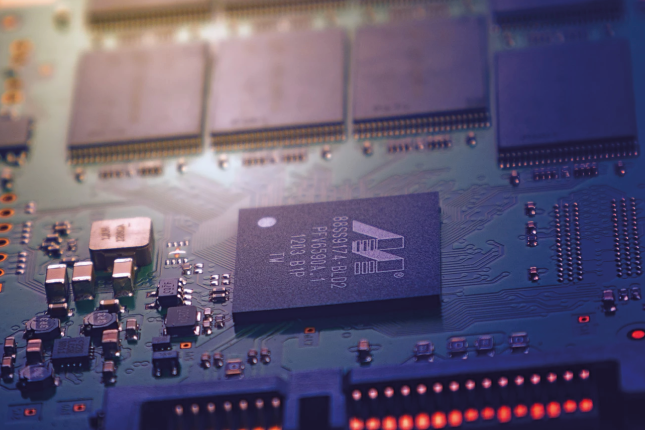IPC-4556 is the specification for the electroless nickel/electroless palladium/immersion gold (ENEPIG) surface finish for printed circuit boards. Released in January 2013, the specification presents the IPC’s detailed guidelines for achieving a reliable PCB surface finish for optimal shelf-life, solderability and wire bonding for gold, copper and aluminium wire applications.
The specification covers a range of PCB surface finish parameters that have been developed for reliable contact performance, including: visual references, adhesion, solderability, cleanliness and electrolytic corrosion. However, a great deal of the focus of the document is on the specific thickness range for the nickel, palladium and gold layers. It’s essential that the palladium layer be thick enough to impede nickel diffusion to the gold surface, helping to prevent hyper-corrosion of the electroless nickel deposit. (Hyper-corrosion results in unreliable solder joints). Yet, if the palladium layer is too thick, the solder joint can become brittle, and may eventually fail. The gold layer is required to protect the palladium layer from contamination that may adversely affect wire bonding and soldering, and must be above the specified thickness.
Adherence to the specification helps PCB manufacturers deliver products that meet the IPC category three life of at least twelve months.

IPC-4556 states that layer thickness must be measured using x-ray fluorescence (XRF) methodology. Through extensive testing using XRF in the development of the specification, the IPC have set out a detailed set of measurement criteria, including equipment set-up, measurement protocols and calibration advice.
Those using XRF instruments must be aware of a number of factors affecting the results if they are to assure accurate and reliable thickness measurements. These include the following:
Sample size
Plating thickness varies with the plating area, with smaller features resulting in a thicker plating layer. Therefore, it is essential that pad size used for measurement is consistent for both calibration and production readings.
Calibration Standards
The IPC recommends the use of national standards traceable calibration standards with thicknesses similar to those measured on the devices in production. A gauge R&R, or equivalent statistical methodology, should be carried out. Furthermore, calibration standards should be checked frequently.
XRF instrument software
Many XRF instruments come with background correction software which is designed to eliminate background scatter from the substrate that can give incorrect readings. This feature may need activating, and the user will need to determine how to do this, if applicable.
Detector type
The detector must be capable of measuring tri-level thin coatings. Solid State Detectors (SSD) provide better resolution than proportional counter systems, however there may be a trade off in longer measurement times for the SSD, depending on the age and capability of the XRF instrument.
The IPC-4556 guidelines help to ensure good quality and predictable, repeatable shelf life of the ENEPIG surface finish. However, careful consideration and understanding of the XRF instrumentation and associated software, as well as using the right calibration procedure, are all essential to ensure accurate layer thickness measurements with XRF. You can obtain a copy of the specification directly from the IPC here.
Hitachi High-Tech Analytical Science are members of the IPC and fully recommend following IPC guidelines for achieving quality and reliability within printed circuit board manufacture. Our XRF instruments are developed to keep up with the rapid advances of PCB technology, and are designed to help you achieve consistency and reliability in production